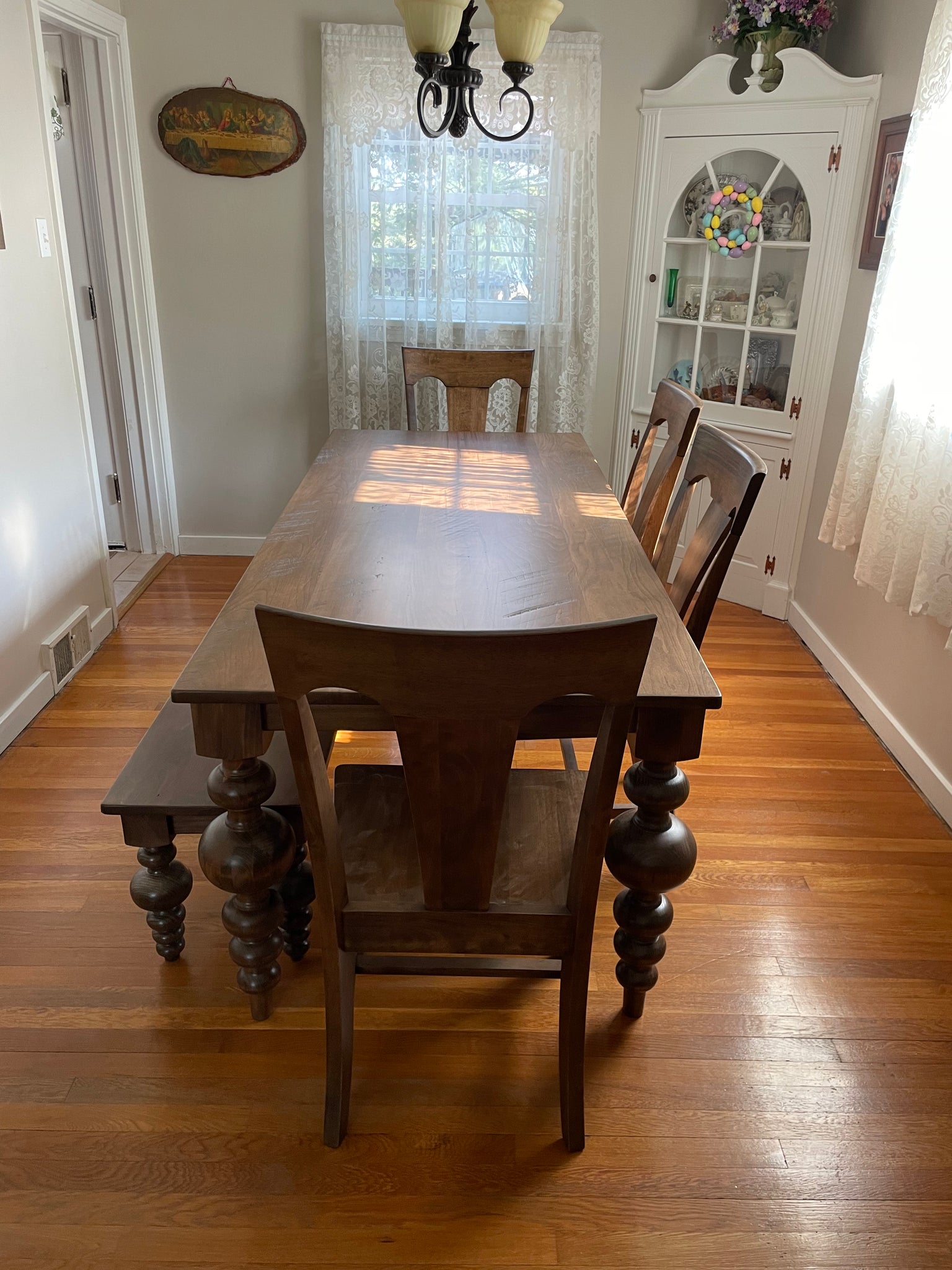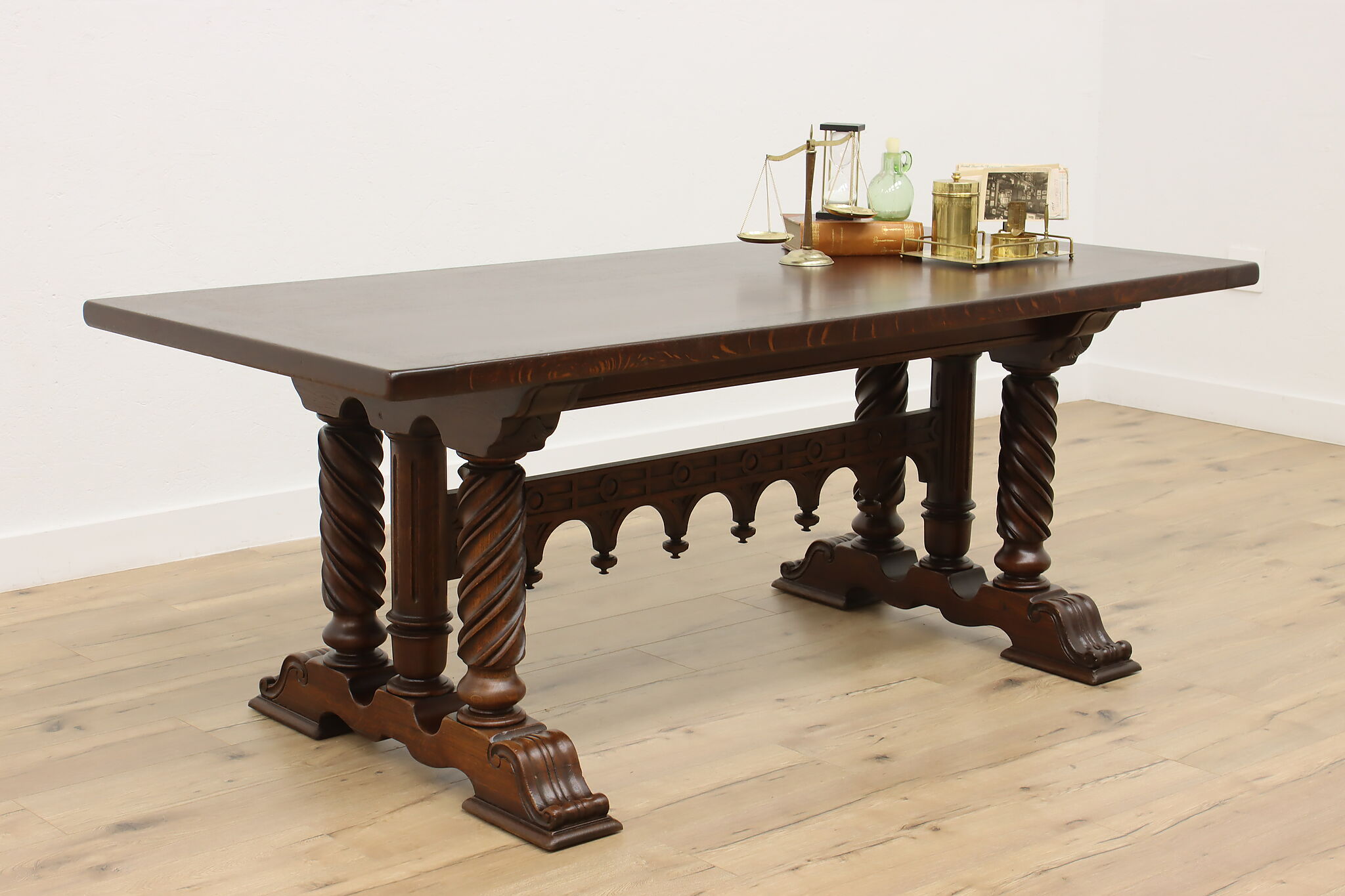Specialist Tips for Setting Up Dining-room Table Legs for Optimum Stability
When it concerns mounting dining-room table legs, accomplishing maximum stability is vital for both performance and looks. The process starts with selecting the best products and hardware, followed by careful alignment and consideration of weight distribution. Each step plays a critical function in ensuring that the finished item withstands daily use without jeopardizing security or layout integrity. Understanding the subtleties of these aspects can significantly influence the total result. What specific strategies can boost security also further?
Pick the Right Legs
When selecting the suitable legs for your eating room table, it is important to consider both functionality and looks. The legs you pick will considerably affect the overall layout and security of the table. First, review the table's planned use; if you anticipate frequent events, sturdier legs, such as those made from solid wood or metal, may be preferable, as they supply increased longevity and support.
Next, consider the height and design of the legs in connection with the tabletop. Basic eating tables generally vary from 28 to 30 inches in height, so guarantee the legs line up with this requirement for convenience. The design of the legs should match the design of the tabletop-- whether it be modern-day, rustic, or standard. For circumstances, conical legs can include a modern touch, while transformed legs could convey an extra traditional visual.

Select Appropriate Equipment
How can the ideal hardware boost the security and long life of your dining room table? The selection of suitable equipment is crucial to making certain that the legs of your table are securely attached and able to hold up against routine use. High-quality screws, screws, and braces give the necessary strength to support the weight of the table, as well as any type of added tons positioned upon it during dishes or gatherings.
When selecting screws, select those made from sturdy products such as stainless-steel or brass, which resist rust and preserve integrity with time. The size of the screws is just as crucial; they need to pass through deeply right into the table's framework without jeopardizing integrity. For bolted connections, take into consideration utilizing lock washing machines to avoid loosening up as a result of vibration or activity.
Additionally, making use of corner braces can add additional support, specifically for bigger tables or those with heavier tops. These brackets disperse weight uniformly and help keep the table's shape. Making certain that the equipment you pick is proper for the certain products of your table will certainly even more improve its general security and long life, allowing you to enjoy your eating experience for several years to find.
Ensure Appropriate Alignment
Correct positioning of eating room table legs is important for both aesthetic allure and functional security. To achieve optimum alignment, start by determining the range from the table's corners to the leg add-on factors.
Make use of a degree throughout installment to verify that each leg is vertical to the table top. This step is important, as also small inconsistencies can rise into considerable stability problems in time. It is a good idea to mark the preferred leg positions on the underside of the table with a pencil or masking tape prior to protecting them. This technique works as a visual guide, permitting modifications as needed.
In addition, verify the placement after the initial screws are tightened up, as modifications may be necessary before completely protecting the hardware. By prioritizing proper positioning, you not just enhance the table's total layout however additionally make sure that it remains secure and useful for several years to find.

Think About Weight Circulation
After guaranteeing correct positioning of the dining area table legs, it is very important to think about weight distribution to boost stability and functionality. dining room table legs. Appropriate weight distribution is important in stopping tottering why not try here and guaranteeing that the table can support its designated load without risk of tipping or falling down
When positioning the legs, ensure they are positioned at equivalent ranges from the center of the table to evenly disperse the weight across the structure. Take into consideration the weight of the table top and any kind of things that will often rest on it, such as tabletop appliances or attractive pieces. Tables with much heavier surfaces need to ideally have legs located closer to the corners, as this makes the most of the base of support and decreases the danger of instability.
Furthermore, if the table is meant for use in a high-traffic location, think about making use of much heavier products for the legs or adding supporting elements, such as cross-bracing or a reduced shelf - dining room table legs. These changes can help keep equilibrium and avoid moving throughout use. Ultimately, a well-considered weight circulation method will substantially enhance the table's total performance, guaranteeing it remains a useful and attractive centerpiece for your eating area
Test Security Before Use
Checking the security of the dining room table before use is a vital action that should not be overlooked. Ensuring that the table is safe and stable can protect against accidents and extend the life expectancy of the furnishings. Begin by applying gentle stress to different points on the table surface. Lower on the center and after that along the sides, observing any wobbling or changing. If the table reveals instability, recognize the legs or joints that may require change.
Next, examine that all bolts and screws are tightened up appropriately. Loosened links can result in instability and prospective damage over time. If required, utilize wood adhesive on joints to boost security, making certain to enable appropriate drying time.

Verdict
In final thought, the installation of dining-room table legs calls for cautious consideration of products, hardware, positioning, and weight circulation to achieve maximum security. By picking tough legs and high-quality bolts, ensuring precise positioning, and distributing weight evenly, the structural honesty of the table can be substantially boosted. Conducting a security test before routine use even more makes sure that the table will endure everyday pressures, thus giving a risk-free and dependable dining experience.
When it comes to mounting dining space table legs, achieving maximum stability is critical for both functionality and aesthetic appeals. The legs you choose will dramatically affect the overall design and stability of the table (dining room table legs). Standard dining tables generally vary from 28 to navigate here 30 inches in you can try these out height, so make certain the legs align with this requirement for comfort.Proper placement of dining space table legs is necessary for both visual allure and practical security.In verdict, the installment of eating room table legs needs careful consideration of products, weight, equipment, and placement circulation to attain optimum security